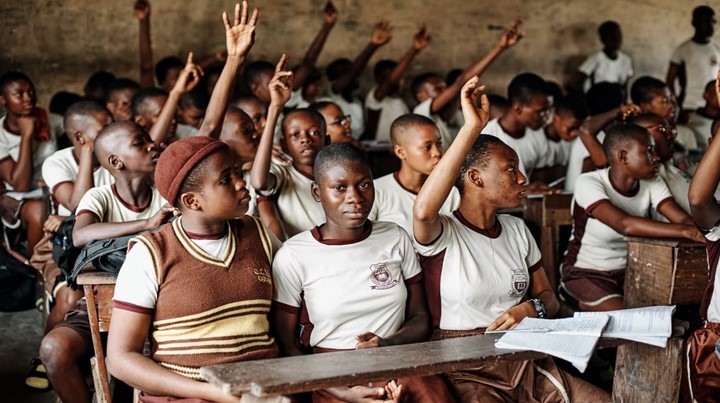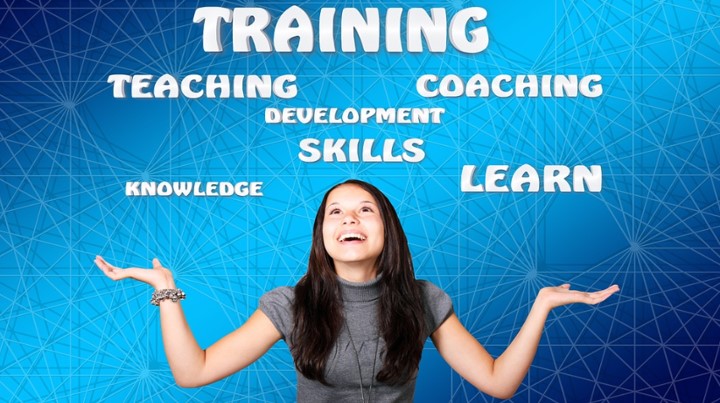Last Updated on April 22, 2023 by Uncle Pat Ugwu
Education is an important part of personal and social development because it provides people with the information and skills they need to thrive in life. In many nations, the K-12 basic education program, which covers thirteen years of basic education from Kindergarten to 12th grade, serves as the cornerstone of this progress.
However, the particular implementation and structure of the K-12 basic education program might differ from nation to country. In this blog article, we will look in depth at the K-12 basic education program, its aims, and how it is executed in various nations.
You will have a better knowledge of this vital education system and its importance in personal and social growth by the conclusion of this essay.
What is K-12 Basic Education Program?
K-12 education refers to the sum total of primary and secondary education, from Kindergarten (K) to 12th grade (12). It is the education system that covers the formal education a student receives from the age of 5 or 6 until they graduate from high school, usually at the age of 18.
The K-12 education system in the United States typically includes the following grades and subjects:
Kindergarten (K): Children who are 5 or 6 years old typically attend Kindergarten. The curriculum focuses on the development of basic skills such as reading, writing, math, and social skills.
Grades 1-5: These are the primary school grades and students are usually between the ages of 6-11. The curriculum includes subjects such as reading, writing, math, science, social studies, and electives such as art, music, and physical education.
Grades 6-8: These are the middle school grades and students are usually between the ages of 11-14. The curriculum includes more advanced subjects such as math, science, history, and English, as well as electives such as art, music, physical education, and foreign languages.
Grades 9-12: These are the high school grades and students are usually between the ages of 14-18. Students are required to take core subjects such as English, math, science, and social studies, and they also have the option to take electives such as art, music, physical education, and foreign languages. High school students are also required to take certain number of credits to graduate.
In addition to these traditional academic subjects, K-12 basic education program also includes other important components such as physical education, health education, and other elective subjects like art, music, technology and languages. The curriculum is designed to provide students with a broad range of knowledge and skills that will help them succeed in their future endeavors.
The Philipian Government has their official k12 basic education program here.
Primary Education
Primary education, also referred to as elementary education, is the first phase of formal education within the K-12 basic educational program. Typically, primary education covers the age range of 5-11 years and consists of five or six grades, depending on the country. The primary aim of this phase is to equip students with foundational skills that are essential for their academic success in the future. These include but are not limited to reading, writing, mathematics, and critical thinking. In addition to these core subjects, primary education may also incorporate other subjects such as social studies, science, and art.
The significance of primary education in the development of children is immense. It provides them with a strong foundation of knowledge and skills, which are essential for their lifelong learning journey. Moreover, primary education helps children in developing their social and emotional skills. Students learn to work collaboratively in teams, communicate effectively, and establish positive relationships with their peers. These skills are fundamental for a child’s holistic development and lay the groundwork for their future success.
Secondary Education
Secondary education is the next phase of formal education after primary education and typically caters to students aged 12-18 years old. In the United States, it includes middle school or junior high school (grades 7-8) and high school (grades 9-12). Secondary education builds on the foundational skills learned in primary education and aims to prepare students for higher education and/or the workforce.
In secondary education, students typically take a diverse range of courses, including English, math, science, social studies, and electives such as art, music, and foreign languages. Depending on their interests and career aspirations, students may opt for advanced or honors courses, as well as career and technical education courses that provide specialized training in specific fields.
One of the notable distinctions between primary and secondary education is the level of academic rigor. Secondary education is generally more challenging and demanding than primary education, as it is designed to equip students with the necessary skills and knowledge for college or the workforce. It requires students to develop higher-order thinking skills such as analysis, evaluation, and synthesis, and to apply their knowledge to solve real-world problems. These skills are crucial for success in higher education and the workplace.
Challenges Facing K-12 Education
K-12 education is a critical aspect of preparing students for future success in their college and career endeavors. However, the education system is currently facing several challenges that need addressing. One of the most significant of these is funding. Many schools struggle to provide adequate resources to support high-quality education, which is vital to students’ academic achievement.
Moreover, there is a shortage of qualified teachers in specific areas, particularly in STEM (science, technology, engineering, and math) fields. This shortage results in students not receiving the best possible education and may limit their future career prospects.
Innovations in K-12 Education
In recent times, K-12 basic education program has seen innovative approaches that are gaining traction. One of these approaches is the use of technology to improve teaching and learning. By using educational apps, digital tools, and online learning platforms, students can have personalized and engaging learning experiences that cater to their unique needs and interests.
Another innovative approach to K to 12 basic education system is project-based learning. This approach emphasizes hands-on and experiential learning, where students work on long-term projects that require them to apply their knowledge and skills to solve real-world problems. Unlike the traditional method of memorizing facts and figures, project-based learning promotes practical application of knowledge and teaches critical thinking and problem-solving skills.
Innovative approaches such as technology integration and project-based learning allow students to engage in learning in new and exciting ways. They enable students to develop problem-solving, critical thinking, and teamwork skills while promoting creativity. Educators who embrace these approaches can help their students build a strong foundation for future success in their academic and professional pursuits.
K-12 Structure in Summary
The basic structure of the k to 12 basic education system in the US typically includes the following stages:
- Pre-Kindergarten or Nursery School (optional)
- Kindergarten (age 5)
- Elementary School (grades 1-5 or 6, age 6-11)
- Middle School or Junior High School (grades 6-8 or 7-8, age 11-14)
- High School (grades 9-12, age 14-18)
After completing high school, students can choose to pursue higher education at colleges or universities, which may offer undergraduate and graduate degrees.
The curriculum in the US varies by state and district, but typically includes core subjects such as English/Language Arts, Mathematics, Science, and Social Studies/History, as well as other subjects such as Physical Education, Fine Arts, and Foreign Languages.
Final Thoughts
The phrase “K-12 basic education program” is used to characterize the educational systems of several nations. This system covers thirteen years of basic education, from Kindergarten to the twelfth grade, and is designed to provide pupils with a broad-based education that prepares them for higher education or the workforce. Curriculum and organization may change, but the end goal is to educate students with the knowledge and skills they need to succeed in their future endeavors.
The K-12 basic education program is a key foundation for the development of individuals and communities, and policymakers, educators, and parents must work together to enhance and strengthen this system to ensure that children receive the best education possible.







